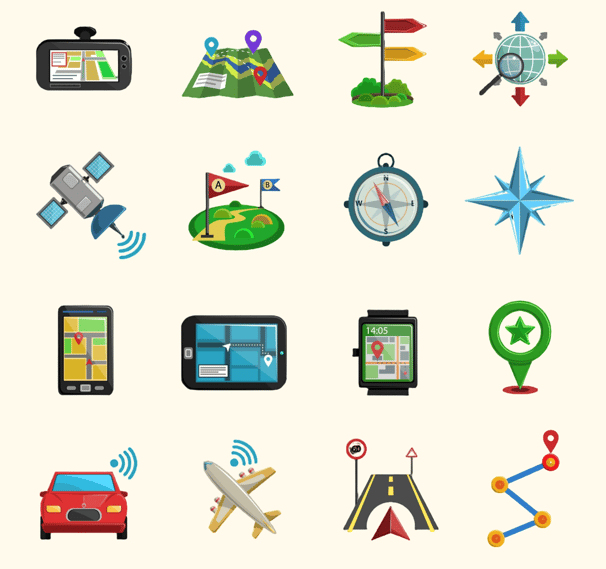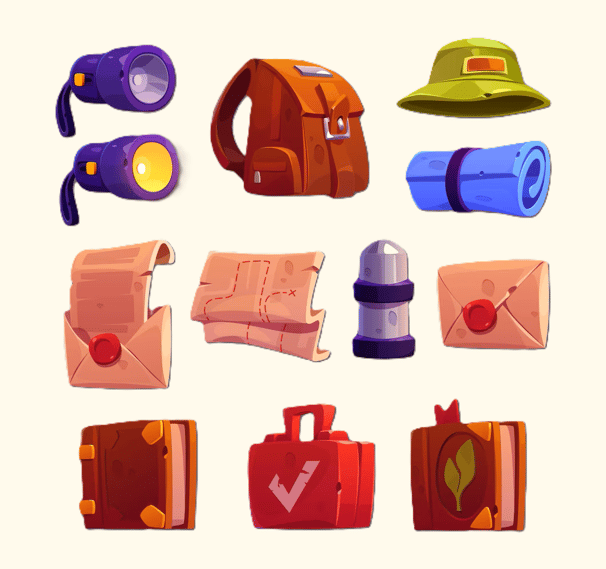Navigation
Familiarize yourself with local maps and landmarks in case electronic navigation fails. In a crisis or survival situation, relying solely on GPS devices or smartphone navigation can be risky. Power outages, device failure, or a lack of internet connectivity can render electronic navigation useless. Therefore, understanding how to navigate using physical maps and recognizing local landmarks is essential for staying oriented and finding safe routes.
12/13/20242 min read
Navigation
Familiarize yourself with local maps and landmarks in case electronic navigation fails. In a crisis or survival situation, relying solely on GPS devices or smartphone navigation can be risky. Power outages, device failure, or a lack of internet connectivity can render electronic navigation useless.
Therefore, understanding how to navigate using physical maps and recognizing local landmarks is essential for staying oriented and finding safe routes.


Why Familiarizing Yourself with Maps and Landmarks is Important
Reliability:
Physical maps don’t rely on batteries or internet access and are always available.
Safety:
Knowing the geography of your area can help you identify safe routes or avoid hazardous areas.
Emergency Evacuation:
In emergencies, roads may be blocked or dangerous. Familiarity with alternate routes can save time and keep you safe.
Avoid Getting Lost:
Understanding key landmarks can help you stay on course, even if you lose track of your exact location.
Steps to Familiarize Yourself with Maps and Landmarks
1. Study Local Maps in Advance
Obtain Physical Maps:
Get maps of your town, city, and surrounding regions. Include topographical maps if available, as they show terrain features like hills, rivers, and forests.
Identify Key Features:
Take note of roads, rivers, mountains, forests, lakes, and significant infrastructure (bridges, railways, highways).
Mark Important Locations:
Highlight safe zones, evacuation routes, medical centres, police stations, and resource points (water sources, shelters).
2. Memorize Key Landmarks
Types of Landmarks to Know:
Natural Landmarks: Rivers, lakes, mountains, hills, valleys, and large trees.
Man-Made Landmarks: Bridges, towers, large buildings, statues, parks, and intersections.
Reference Points:
Familiarize yourself with landmarks along common routes and note where they are in relation to each other.
Practice mentally connecting these landmarks to create an internal map of your area.
3. Learn to Read a Map
Map Symbols:
Understand symbols for roads, trails, rivers, elevation changes, buildings, and other key features.
Study the map’s legend and scale to understand distances and directions.
Compass Use:
Practice basic compass navigation to understand cardinal directions (North, South, East, West) and orient the map correctly.
4. Practice Navigating Without Electronics
Take Short Practice Trips:
Plan routes using a paper map and navigate without GPS. Use landmarks to stay on course.
Start with familiar areas and gradually explore less familiar places.
Check Your Progress:
During practice trips, regularly check your map and see if your location matches the landmarks around you.
5. Identify Safe Meeting Points
Designate safe meeting locations for family or group members in case of separation. Ensure everyone knows how to reach these locations using physical maps and landmarks.
Tips for Using Landmarks in Navigation
Create Mental Routes:
Plan journeys by stringing together familiar landmarks (e.g., “Walk past the large church, turn left at the park, cross the bridge”).
Use Linear Features:
Follow natural or man-made linear features like rivers, railroads, or roads to maintain direction.
Identify Distinctive Landmarks:
Look for landmarks that are unique and easy to recognize (e.g., a tall radio tower, a brightly painted building).
Distance Estimation:
Practice estimating distances between landmarks so you can judge your progress.
Night Navigation:
Learn to identify landmarks that are visible at night, such as lit buildings, silhouettes of hills, or constellations.
Preparing a Survival Map Kit
To ensure you are always ready, prepare a survival map kit with the following:
Local and Regional Maps
Compass
Highlighters and Pencils (for marking routes)
Waterproof Map Case
Emergency Contact Information
Notes on Key Landmarks and Routes
Relying on Physical Maps: Ensures you can navigate without technology.
Memorizing Landmarks: This helps you stay oriented even when maps aren't available.
Regular Practice: Builds confidence and skill in navigating unfamiliar terrain.
By preparing in advance and familiarizing yourself with local maps and landmarks, you can ensure that you and your loved ones stay on course, even when technology fails.






